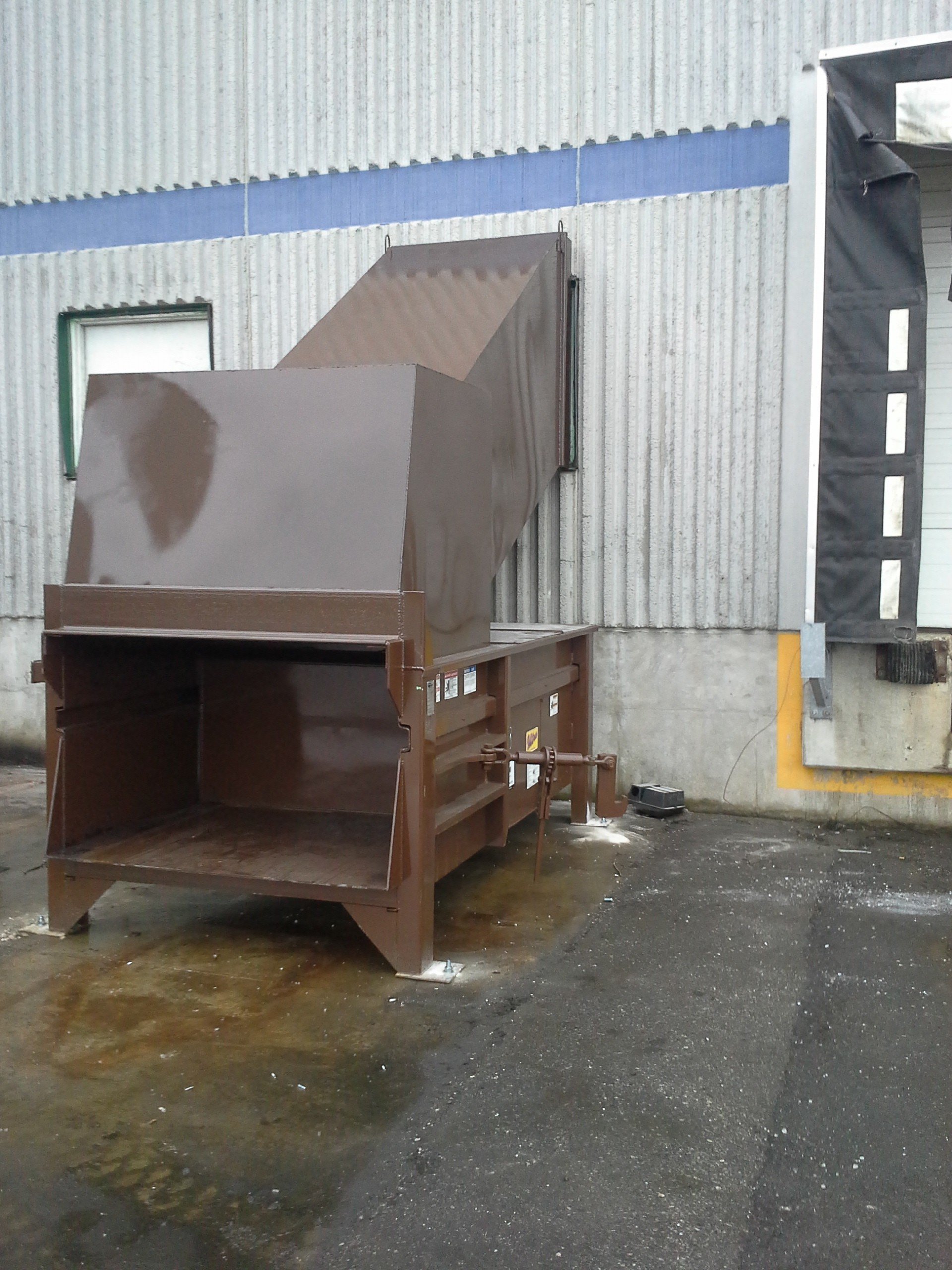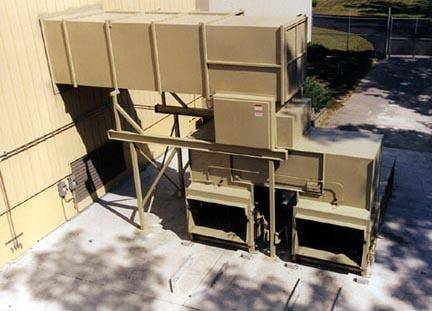Top reasons to choose Commercial trash compactor equipment for your business
Recognizing the Different Usages of Waste Devices in the Recycling Industry
The reusing market depends greatly on specialized waste tools to enhance processing and healing. Each tool, from shredders to balers, offers a distinct function that enhances general effectiveness. Comprehending these duties is important for enhancing sustainability initiatives. Commercial garbage compaction equipment. As technology advancements, brand-new advancements emerge, promising to change conventional methods. This development raises important questions regarding the future of waste monitoring and its effect on ecological conservation. What changes exist in advance for this crucial sector?
The Duty of Shredders in Material Handling
Shredders play a vital role in the reusing market by successfully refining numerous sorts of waste materials. These machines are created to lower large things, such as plastics, metals, and organic waste, right into smaller sized, workable items. This size decrease is important for subsequent recycling processes, as it enables less complicated handling and sorting. In enhancement to assisting in recycling, shredders boost safety and security by lessening the danger of injury connected with handling cumbersome waste products.
Shredders contribute to environmental sustainability by ensuring that materials are processed in a way that maximizes resource healing. They can deal with a varied variety of materials, making them versatile devices in waste management facilities. The efficient operation of shredders not only streamlines the reusing process yet also raises the overall effectiveness of waste diversion initiatives, advertising a round economy. Their significance in product processing can not be overemphasized, as they act as a fundamental action in the direction of sustainable waste administration techniques.

Just How Balers Enhance Performance in Waste Monitoring
Balers substantially improve performance in waste monitoring by condensing various products into bundles, which simplifies storage and transport. By compressing recyclables such as cardboard, plastics, and metals, balers significantly lower the volume of waste. This compression not only optimizes area in reusing facilities but likewise lessens the number of trips called for to carry materials, causing reduced gas costs and reduced environmental influence.
Additionally, balers add to enhanced safety in waste management procedures. Portable bales are much easier to handle and pile, lowering the risk of accidents connected with loosened products. The uniform size of bales enables extra reliable packing and dumping procedures, enhancing operations within recycling centers. In addition, balers can boost the total top quality of recyclables, as effectively compacted materials are much less most likely to be contaminated. On the whole, balers play a vital function in maximizing waste administration methods, promoting sustainability in the reusing market.
Conveyor Solutions: Improving the Recycling Refine
Including innovative equipment like balers substantially improves waste monitoring procedures, however the performance of the reusing procedure is better improved via the use of conveyor systems. These systems play a necessary duty in the smooth transportation of materials within reusing centers. By assisting in the activity of numerous waste types, conveyor systems lessen manual handling and reduce the danger of contamination throughout the reusing process.
Conveyor systems can be customized to fit the distinct designs and operational requirements of reusing facilities. Their capacity to run constantly allows for a stable flow of materials, enhancing efficiency and ensuring that refining and arranging equipment obtains a regular supply.
Geared up with functions like adjustable rates and automated controls, conveyor systems can maximize the flow of products, substantially improving overall effectiveness (Commercial garbage compaction equipment). These systems are crucial in contemporary recycling procedures, contributing and improving procedures to effective waste management.
Sorting Equipments: The Secret to Material Healing
Sorting machines are important elements in the recycling industry, substantially improving the efficiency of product healing. These equipments play a crucial function in the splitting up of various recyclable products, permitting a structured procedure that optimizes source extraction. By Read Full Report utilizing innovative innovations, such as optical sensing units and air classifiers, arranging makers can identify and categorize materials based upon their composition, dimension, and weight. This capacity guarantees that steels, plastics, and paper products are efficiently isolated, minimizing contamination and enhancing the high quality of recycled result.
The procedure of sorting devices substantially lowers the dependence on manual labor, which can be both vulnerable and taxing to mistakes - Commercial garbage compaction equipment. Furthermore, the automation supplied by these equipments accelerates the general recycling process, bring about greater throughput and enhanced operational effectiveness. Arranging machines are crucial in accomplishing lasting waste monitoring goals, making it possible for the reusing industry to efficiently recover useful products while reducing garbage dump dependence.
Technologies in Waste Tools for a Sustainable Future
Recent innovations in waste equipment are driving the reusing industry towards a more sustainable future. Innovations such as automated sorting systems, which utilize expert system and go to these guys machine understanding, boost effectiveness by accurately identifying and dividing recyclables. This leads to higher recuperation prices and minimized contamination. Additionally, growths look at these guys in compacting innovation enable for more efficient transport of materials, lessening carbon footprints throughout transit.
Improvements in shredding devices boost the handling of intricate products, allowing the recycling of products that were as soon as deemed non-recyclable. The combination of renewable resource sources, like solar power, in waste handling centers further contributes to sustainability goals. Additionally, developments in biodegradable materials and waste-to-energy innovations are reshaping the landscape of waste administration. Collectively, these improvements indicate a transformative change within the reusing market, advertising not only ecological security however likewise economic viability for future generations.
Regularly Asked Questions
What Kinds Of Materials Can Waste Devices Take Care Of?
The sorts of products waste tools can deal with include plastics, steels, paper, glass, and natural waste. Each equipment type is developed for certain materials, maximizing performance and efficiency in arranging and processing various waste streams.
Exactly How Commonly Should Waste Devices Be Kept?

Are There Safety Problems With Making Use Of Waste Equipment?
Security worries with making use of waste tools include prospective injuries from mechanical breakdowns, direct exposure to unsafe products, and inadequate training. Proper maintenance, regular assessments, and worker education and learning are important to mitigate these threats effectively in any setup.
What Is the Ordinary Life-span of Recycling Tools?
The typical life expectancy of reusing tools generally ranges from 10 to 20 years, depending upon elements such as usage intensity, upkeep methods, and technical developments, which can substantially affect durability and effectiveness in time.
How Is Waste Devices Powered in Recycling Facilities?
Waste equipment in recycling facilities is typically powered by electrical power, though some devices might utilize alternate power resources like all-natural gas or diesel. This power makes it possible for reliable processing and improvement of products for recycling purposes.
Shredders play an essential role in the reusing industry by effectively refining numerous kinds of waste products. They can deal with a varied variety of materials, making them flexible devices in waste administration centers. Balers substantially boost efficiency in waste management by condensing numerous materials right into bales, which simplifies storage space and transportation. The types of materials waste equipment can manage include plastics, metals, paper, glass, and organic waste. Safety worries with utilizing waste equipment include possible injuries from mechanical malfunctions, direct exposure to hazardous materials, and insufficient training.